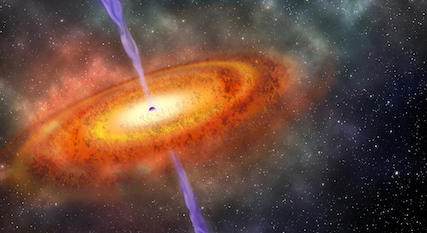First, think about the artist’s conception and why the accretion disk is simply a disk. The accretion disk forms when diffuse material is attracted to a massive central body, like a black hole. The flattened shape of the accretion disk is due to angular momentum, which dictates the particles’ motion as they rotate around the black hole. As collisions happen between the particles, the angular momentum is redistributed and they settle into a less collision-prone orientation — a disk.
This mathematical truth is the inspiration for the artist drawings. However, as you so aptly point out, the picture does not capture the reality. Sgr A* and other supermassive black holes lie at the centers of galaxies and are not accreting matter from a single source. The influx of material is lumpy and can be affected by collisions with dense matter like stars, asteroids, or interstellar gas. In fact, when we’re making calculations of the accretion rate of Sgr A*, we use both disk and spherical accretion models (which is more like you’re suggesting, where accretion happens on multiple planes) and compare them to observations. Given that we can tell Sgr A* is surrounded by its fuel source but not uniformly enveloped by it, the truth lies between the two models. However, Sgr A* is currently in a low-luminosity state: It’s not accreting much, so it’s not giving us much light to work with.
The stars orbiting Sgr A* do orbit on a variety of planes. Their motion (and the motion of all stars in the galaxy) is not dominated by the black hole, but rather affected by their neighboring stars. They also may retain some of the motion of the gas clouds that formed them. These stars blast right through the accretion disk in the near part of their orbit, and when they do, part of their gas shells interact with accreting material. We’re actually using the stars orbiting Sgr A* to better understand how accretion works in that system.
National Oceanic and Atmospheric Administration Contractor,
Quality Assurance, I.M. Systems Group,
College Park, Maryland










